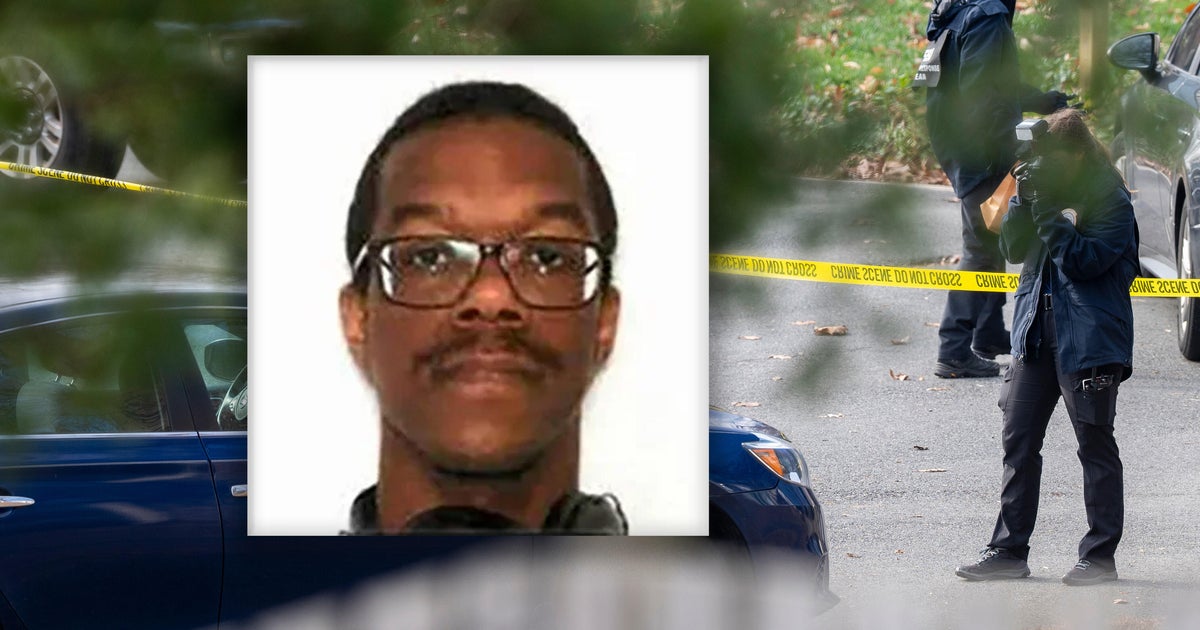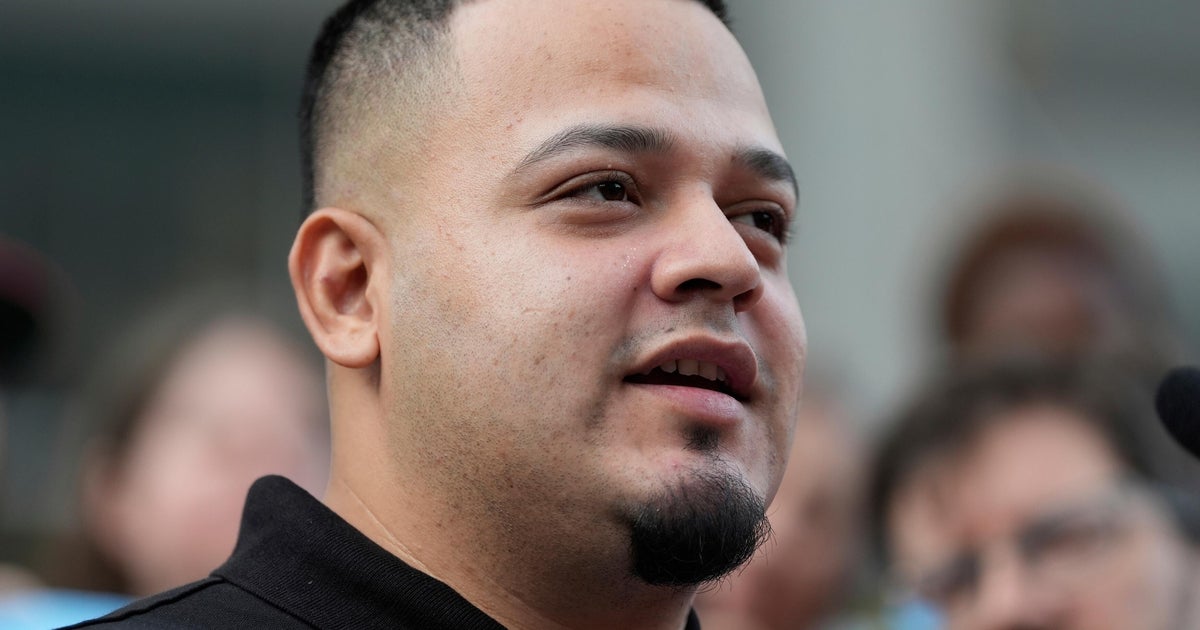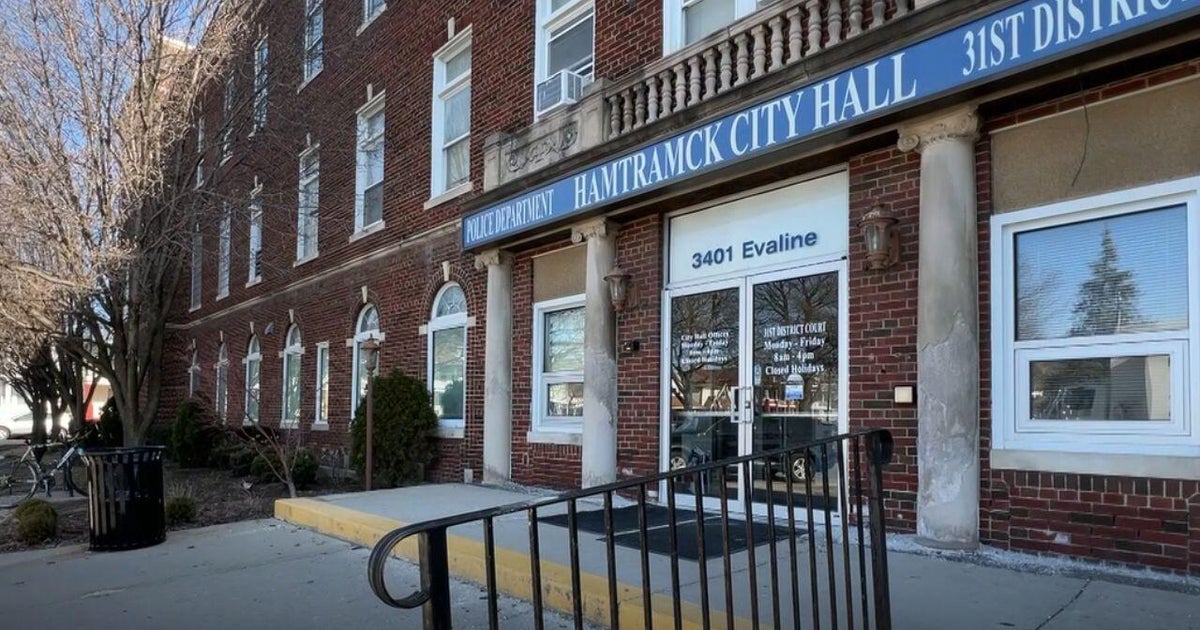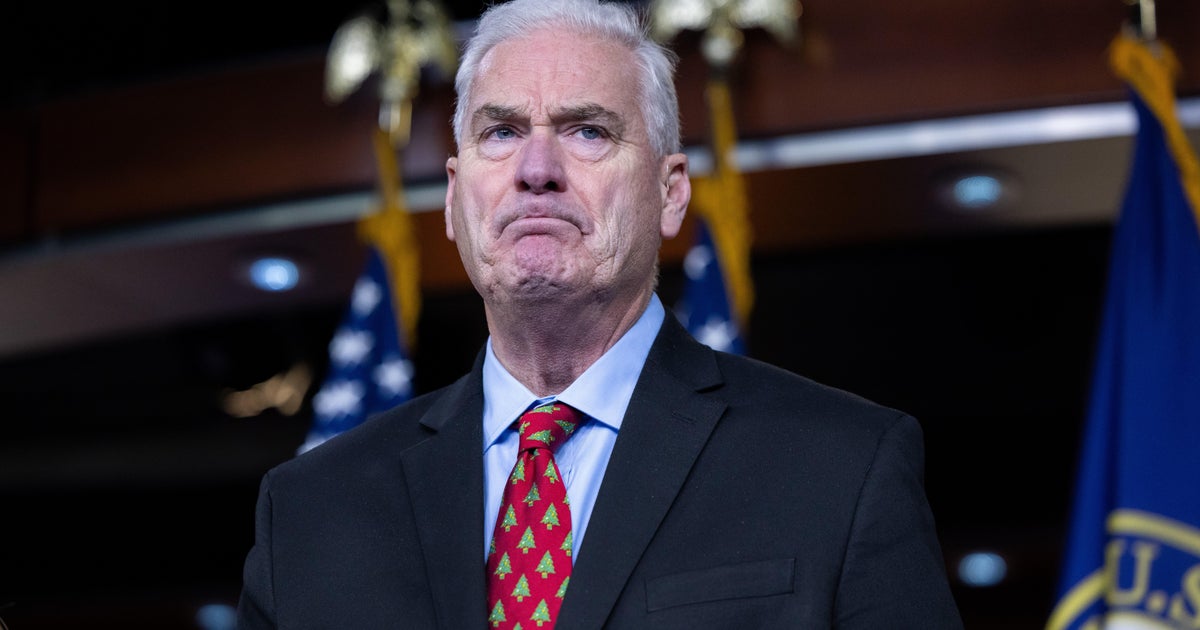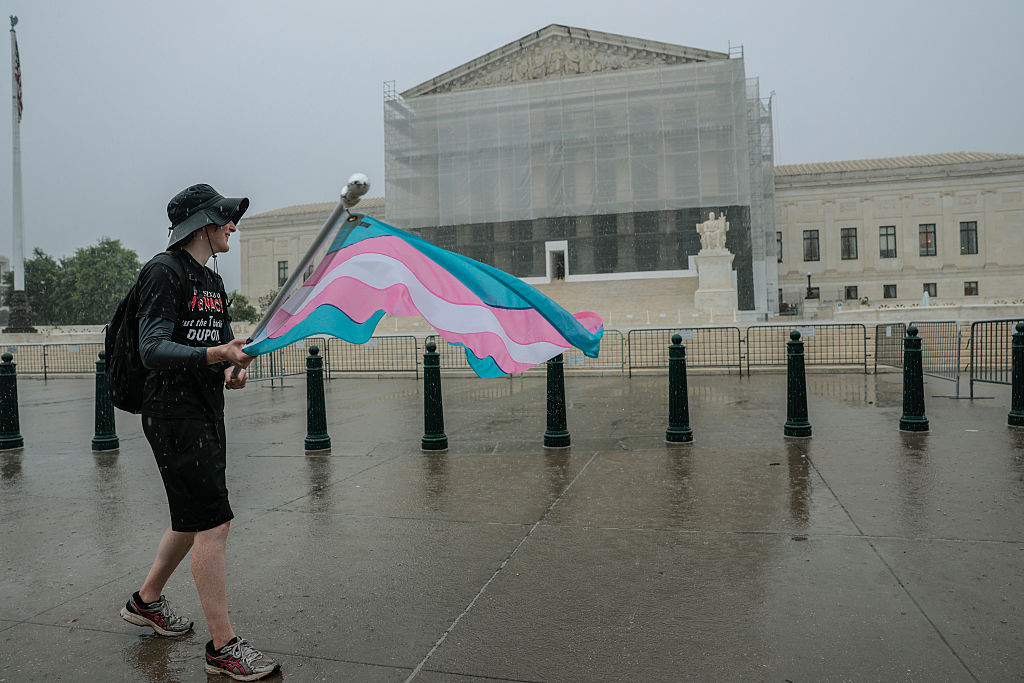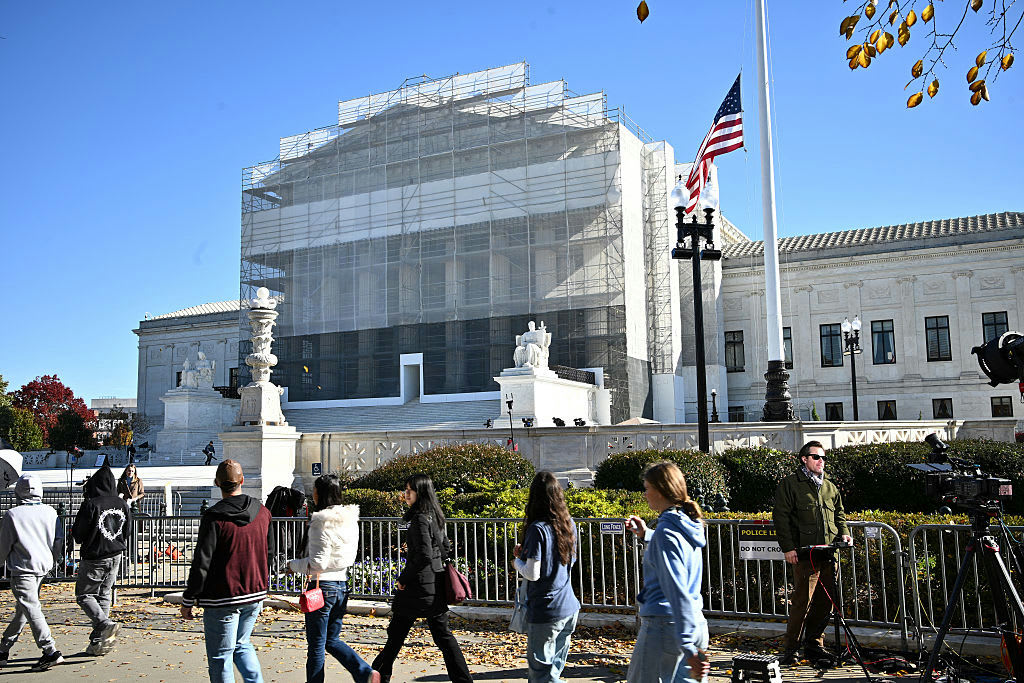Supreme Court probes limits of ATF rule regulating ghost guns
Washington — The Supreme Court on Tuesday appeared skeptical of a challenge to the Biden administration's efforts to regulate unserialized firearms called ghost guns, as they weighed whether the Bureau of Alcohol, Tobacco, Firearms and Tobacco went too far when it took unilateral action to curb gun violence.
The case was brought by a group of firearms owners, gun rights groups and manufacturers who are seeking to invalidate the regulation that subjects ghost guns to the same requirements as commercially made firearms.
The Biden administration has warned that striking down the rule would give criminals, minors and others who are legally barred from having guns access to kits that can be assembled into a functioning, untraceable firearm in less than 30 minutes.
During oral arguments on the second day of the court's new term, a majority of the justices seemed poised to side with the government and uphold the regulation, which would mean that the makers of weapon parts kits would have to be licensed, mark their products with serial numbers, maintain certain records and run background checks on prospective buyers.
The question in the case, known as Garland v. VanDerStok, isn't whether Second Amendment rights were violated, but whether the ATF exceeded its authority when it issued the regulation in 2022. The rule clarified the definition of "firearm" in the Gun Control Act of 1968 to include a weapon parts kit that can be assembled into an operational firearm, and the incomplete frame of a handgun and receiver of a rifle.
The measure aims to address a surge in crimes committed using ghost guns, which can be made from 3D printers or kits and parts available online. Because these firearms don't have serial numbers or transfer records, it's difficult for law enforcement to trace them to their buyers, making them especially attractive to people who can't legally buy firearms or plan to use them in crimes.
But by clarifying the definition of "firearm" in the Gun Control Act to cover these kits, the manufacturers and sellers of ghost guns must adhere to the same requirements that commercial gun makers do.
A group of 20 major cities told the Supreme Court in a filing that the rule appears to have been effective at reducing the use of ghost guns in their municipalities and around the country. In New York, for example, ghost gun recoveries dropped last year for the first time in four years. In Baltimore, they decreased in 2023 for the first time since 2019.
Solicitor General Elizabeth Prelogar, who argues before the Supreme Court on behalf of the government, reiterated that the rule has helped curb the surge in crimes committed using ghost guns. The market for the firearms "essentially collapsed" after the rule took effect, she told the justices, underscoring that they were sold to be "crime guns."
The Supreme Court arguments
Early in the arguments, Justice Samuel Alito questioned the Biden administration's interpretation that a parts kit can be readily converted into a weapon that is regulated as a firearm. Could a pen and pad of paper become a grocery list, he asked, or is a group of eggs, ham, peppers and onions a Western Omelet?
Prelogar said no, and stressed that those items have other uses. But in the case of kits used to assemble ghost guns, they are designed and intended to construct firearms, she said.
The analogy quickly was picked up by Justice Amy Coney Barrett, whose vote in the case could be pivotal. She asked Prelogar if her response would change if a consumer ordered a meal kit from a company like HelloFresh that contained all the ingredients for the purpose of cooking an omelet. The solicitor general said Barrett's is a "more apt analogy," since they are not scattered components.
Prelogar told the court that she has experience putting a parts kit together, which she said required few steps and tools.
Chief Justice John Roberts, another member whose vote will be key, seemed to rebuff claims from the challengers as to the difficulty of assembling a ghost gun from kits. Pete Patterson, who argued for the gun owners and gun rights groups, has said hobbyists interested in building their own firearms often purchase these products, not criminals.
But the chief justice said it's "not terribly difficult" for someone to complete a frame or receiver, which may require drilling a few holes and removing plastic rails.
"Drilling a hole or two I would think doesn't give the same sort of reward that you get from working on your car on the weekends," he said.
Justice Brett Kavanaugh told Prelogar that her interpretation of the Gun Control Act "has force," but he sought assurances that a kit seller who is unaware they're breaking the law would not be charged if they failed to comply with requirements like stamping their products with serial numbers or obtaining a license.
"This is an agency regulation that broadens a criminal statute beyond what it had been before," he said.
Prelogar told Kavanaugh that there's protection for manufacturers who seek to comply with the law in good faith.
"ATF is not trying to hide the ball here. The point of the agency is not a game of gotcha to try to criminally prosecute people. There was a very serious public safety threat posed by the explosion of the use of these ghost guns in crimes, and so the whole point of this regulation is simply to put the regulated industry on notice," she said.
The challenge to the ghost gun rule
The gun owners, advocacy groups and kit manufacturers brought their lawsuit against the Biden administration over the rule shortly after it took effect. They argued that when Congress wrote the 1968 gun law, it didn't give the ATF the power to change the definition of firearm to cover kits. A federal district court judge invalidated the regulation. A panel of three judges on the U.S. Court of Appeals for the 5th Circuit also struck it down, finding that only finished firearms, or complete frames or receivers, are covered by the Gun Control Act.
The Biden administration then asked the Supreme Court to review that decision, arguing that the rule just ensures that ghost guns comply with the same requirements that apply to commercial firearms sales. Prelogar told the Supreme Court those requirements are "crucial" for solving gun crimes and keeping firearms out of the hands of minors, felons and domestic abusers.
Untraceable ghost guns, she said, are "attractive" to people who can't lawfully purchase a gun, and Prelogar lamented that the nation has seen an "explosion in crimes committed with ghost guns" since these kits became available.
The 5th Circuit's decision, Prelogar wrote in a filing, "ignores the words Congress wrote and would effectively nullify the act's careful regulatory scheme by allowing anyone to anonymously buy a kit online and assemble a fully functional gun in minutes — no background check, records, or serial number required."
She also argued that the lower court's interpretation of the law frustrates its design by transforming the definition of firearm into an invitation to evade its requirements.
"All guns could become ghost guns" if the 5th Circuit's decision stands, Prelogar said.
But the challengers said the ATF's clarification cannot be reconciled with the plain text of the Gun Control Act and risks upending the regulation of semi-automatic guns. Patterson told the justices that the ATF has exceeded its authority by "operating outside the bounds set by Congress," and expanding the definition of frame or receiver, as well as firearm through its rule.
The gun owners and manufacturers said in filing that any change in the regulatory approach to privately made firearms must come from Congress, not the ATF.
"The decisive fact in this case is Congress's decision, in the GCA, to focus on the commercial firearm market rather than the private making of firearms for personal use. Accordingly, the GCA does not reach the items used in private firearm making that ATF attempts to regulate," the gun owners, led by Jennifer VanDerStok of Texas, said.
The Supreme Court has been asked to intervene in the legal dispute before, but in an earlier stage in the litigation. In August 2023, the high court agreed to allow the Biden administration to enforce the ghost gun rule until it issues a decision on its legality, likely by the end of June 2025.
The Supreme Court divided 5-4 in halting the district court order that struck down the measure, with Roberts and Barrett joining the three liberal justices in the majority.
Roberts and Barrett's earlier votes make them key justices to watch, though they do not mean they'll vote to uphold the measure now that the Supreme Court is considering the merits of the case.
The high court will consider the ghost gun rule just months after it invalidated a separate measure that banned bump stocks, a firearms accessory that increases a semi-automatic rifle's rate of fire to hundreds of rounds per minute.
In striking down the rule, the Supreme Court's six-justice conservative majority ruled the ATF exceeded its authority when it issued the ban in 2018 after a mass shooting at a music festival in Las Vegas, the deadliest in U.S. history.

